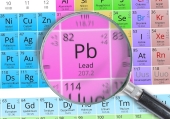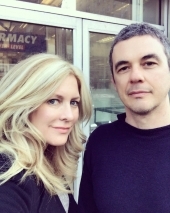
 4
4











Spoilers: oil painting can be very safe and stink free.
Historically, solvents were uncommon and painting without them is easier than it first appears. And cheaper.

 4
4




- Tim's Homestead Journal - Purchase a copy of Building a Better World in Your Backyard - Purchase 6 Decks of Permaculture Cards -
- Purchase 12x Decks of Permaculture Cards - Purchase a copy of the SKIP Book - Purchase 12x copies of Building a Better World in your Backyard
 5
5




Timothy Norton wrote:My understanding is the stink is from the usage of thinners such as turpentine and mineral spirits. Something like linseed oil won't have such a stench but I don't think it works as well as the prior two.



















 5
5




- Tim's Homestead Journal - Purchase a copy of Building a Better World in Your Backyard - Purchase 6 Decks of Permaculture Cards -
- Purchase 12x Decks of Permaculture Cards - Purchase a copy of the SKIP Book - Purchase 12x copies of Building a Better World in your Backyard
 4
4











 7
7




If there is one thing the Wizard of Oz has taught me, it is not to trust school teachers on bicycles.
 4
4




Invasive plants are Earth's way of insisting we notice her medicines. Stephen Herrod Buhner
Everyone learns what works by learning what doesn't work. Stephen Herrod Buhner
 10
10




 4
4




Timothy Norton wrote:My understanding is the stink is from the usage of thinners such as turpentine and mineral spirits. Something like linseed oil won't have such a stench but I don't think it works as well as the prior two.
 7
7




 7
7




Small-holding, coppice and grassland management on a 16-acre site.
 11
11




https://www.instagram.com/spectaclegarden/
https://www.facebook.com/spectaclegarden
 7
7




 4
4




 8
8




Nicole Alderman wrote:I did a lot of oil painting in high school--it was my preferred medium at the time. I usually didn't thin my oil paints much, and usually used boiled linseed oil to do so. That didn't smell much. We did have turpentine to clean the brushes. But, honestly, Dr. Bronners soap (or really any stronger soap like laundry soap or dish soap) will do the trick. It just takes longer. Hot water helps.
Normal linseed oil doesn't work as well as boiled linseed oil for marbled painting (like the pretty insides book cover pages), but I'm pretty sure it'll do fine for normal applications. It will likely take MUCH longer to cure. Oil paints take time to "dry," and that time can be sped up by thinning it. Non-boiled linseed oil doesn't cure nearly as fast as boiled linseed oil.
When I went down my Milk Paint rabbit hole, the company I bought my ready-mix milk paints also sold a Citris Solvent. It evaporates as it dries, and it can also be used as a cleaner. I recall watching a video reviewing it for use as a solvent for oil paints, and they were really pleased with the results. I'm going to see if I can find that video!
In searching for that video, I found this one:
He mentions avoiding solvents, using paints that just have oil and pigment, and some other things (I haven't finished watching it, but it seems like it might be a good resource)
AH-ha! I found the review I watched on the citrus solvent:
Starting at 8:33, he compares the citrus solvent to Gamblin's solvent's safety warmings. Gamblin needs ventilation, while the citrus solvent does not.
At about 9:55, he shows how well it mixes. Through the rest of the video, it looks like he covers a lot of other oil paint tests (I haven't watched it all, because it's an hour. But, there are time stamps). At the end, he gives his final thoughts after painting. He says the performance was great overall. He had no performance issues. He did find the odor strong, but it didn't make him feel dizzy, lightheaded, nauseous or any other health issues. He suggests using a smaller container of it, just to reduce the amount of smell.
Real Milk Paint also sells a Tung Oil, that evaporates faster than Boiled Linseed Oil. I bought their Half citrus, half tung oil mixture to use in sealing my milk paint signs. For that, it worked great. Despite something like 8 months in the elements, I don't see any weathering on the signs. I haven't used it as an oil paint solvent, but I could try it out if you'd like!
 10
10




Kelly Craig wrote:Keep in mind, boiled linseed oil, often referred to as BLO, is just flax seed oil treated by having air blown through it [at a certain temperature] to pre polymerize it, so it will harden quicker. It would still give you significant working time, while doing your painting. Solvent thinners evaporate, rather than harden, so may speed the overall hardening time as it evaporates.





 9
9




Works at a residential alternative high school in the Himalayas SECMOL.org . "Back home" is Cape Cod, E Coast USA.
 4
4




A Hidalgo wrote:Look up Natural Earth Paint. I don't remember if it's a .com or what, but I've been using them for a few years now, and even their solvents are not that stinky. The artist started experimenting when she got pregnant and didn't want the toxicity around her and her kids. The colors are beautiful, and they pride themselves on being as low toxicity as possible. They even have a line of face paint.
 6
6




 5
5











 3
3











 3
3











 3
3











 5
5
















 5
5




Works at a residential alternative high school in the Himalayas SECMOL.org . "Back home" is Cape Cod, E Coast USA.
 4
4











 5
5




 4
4











 4
4




r ranson wrote:
The painting class starts in a few weeks. I have all my supplies ready but the rags and I'm not sure what to get. Synthetic would have less chance of combustion, but cotton rags I can toss in the wood stove.
 4
4











 4
4




r ranson wrote:How stinky is oil painting?
Does it need to be dangerous to the health?
When I watch people oil painting on youtube, they wear gloves or paint halfway outside to get fresh air. What are the health risks and is it possible to avoid these?
Is there a way to do oil painting without stinky stuff?
 4
4




r ranson wrote:I um, might have accidentally signed up for an oil painting class. No solvents, thinners, or terps allowed in the room, only linseed oil and paint.
Not sure what I've gotten myself into. But I do know I like to practice at home.
Do you think there's a cheap way to practice techniques like on a paper pad or something? These primed boards are pretty pricy. Or maybe I can prime some plywood off a wood palette?
 4
4




r ranson wrote:Good point
I didn't get any toxic pigments and did a lot of research into this. I don't have good studio hygiene and probably will have an open cup of coffee in there in less than five minutes. No point going solvent free only to risk the next most problematic thing.
Also, I want to be careful of the septic system when rinsing brushes.
The local waste disposal has a lot of ways to process paint waste, but not oily rags. They just go in the landfill if they don't combust on the way there.
When working with oil based stuff, I usually use the rags as fire starter. But I'm using natural oils in the home...so I don't know about paint rags.
 5
5




r ranson wrote:
Do you think there's a cheap way to practice techniques like on a paper pad or something? These primed boards are pretty pricy. Or maybe I can prime some plywood off a wood palette?
 2
2











 3
3












|
Last year, this tiny ad took me on vacation to Canada
The new permaculture playing cards kickstarter is now live!
https://www.kickstarter.com/projects/paulwheaton/garden-cards
|







